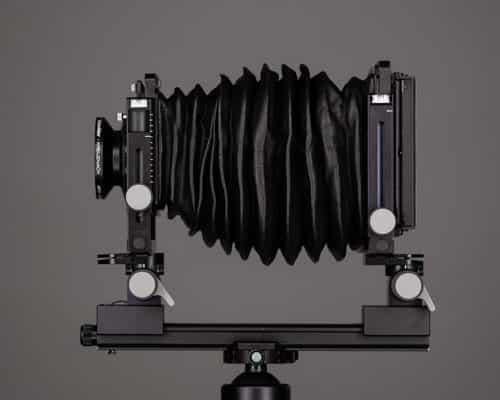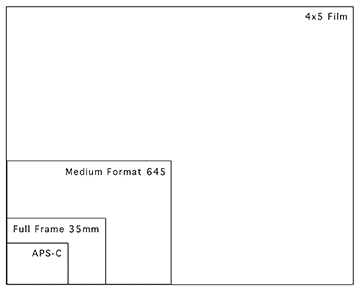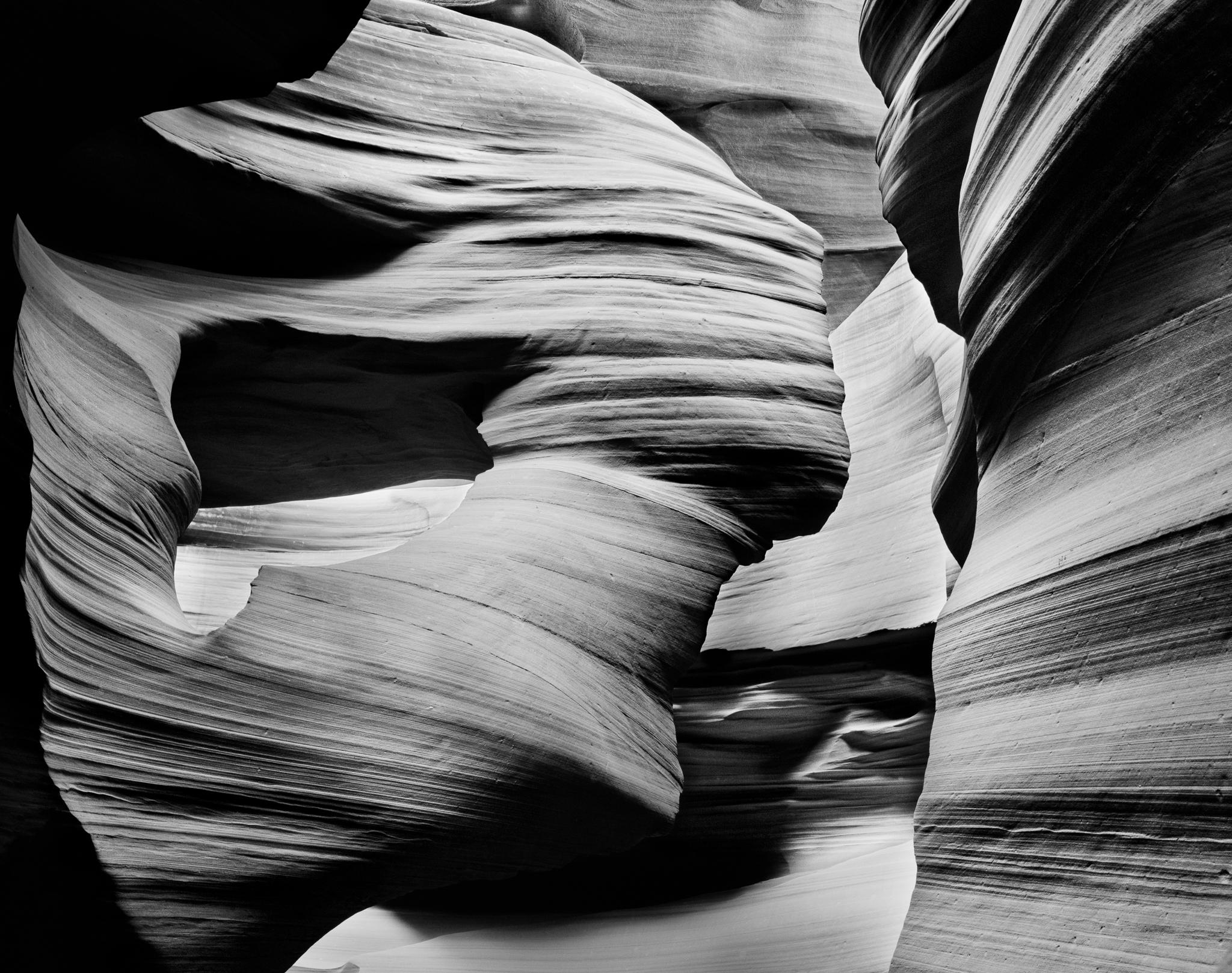Why I Still Shoot Large Format in a Digital Age
Discover the compelling reasons to continue using large format film cameras in our digital world. From escaping the digital workflow to achieving unmatched image quality, explore why traditional methods still have their place in modern photography.

The Journey Back to Film
There are still plenty of reasons to shoot using a Large Format film camera in the age of digital cameras. Before we get into the technical reasons lets start with some history. Photography for me was a way to escape from the static digital world that I lived in for my career. I would head out with my 35mm camera loaded with Velvia and immerse myself in the chaotic world of nature. It was a way to recharge and get as far away from a computer as possible. That time out in nature is what I truly enjoyed, being an observer of the show.
The Digital Temptation
Once I was hooked on photography as an escape along came digital cameras and it changed everything. While the resolution of these early DSLR's was not great the ability to see the results immediately was an incredible advantage. Add to that the fact that pixels are free so you could shoot as much as you wanted and just delete what didn't work. For a time I did fall for the new high MegaPixel DSLR's on the market—and today's mirrorless cameras offer even more impressive high resolution digital sensors. They are awfully tempting after all so I had sold off a couple of lenses in order to purchase a Nikon D800 when it was released. If I could get this high of quality with the ease of digital what more could I ask for?
Over the next couple of years I set my large format camera aside and went out with only my digital camera and did capture some shots I was happy with but there was just something missing. Even though I was taking a lot more shots with the digital camera I didn't end up with any more good images. The biggest problem, however, came when I got the images back home. Once there I had to import the hundreds of images and cull them down to the few good ones and start to process them in Photoshop. I started spending hours upon hours in PhotoShop editing the photos to make them look the way I remember seeing the actual scene. This was the exact thing I was trying to get away from when I started photography, I was spending more time in front of a computer than ever before.
Rediscovering the Magic
Around this time I fell into a photography rut, the joy was gone. To try to snap myself out of this rut I decided to take my 4x5 along on my next photo trip. During that trip, I hardly even touched the digital camera and fell back in love with the process of photography. Since that trip, my primary camera has been a 4x5 once again. I've written more about rediscovering the magic of large format film if you want to dive deeper into this transformation.
The Technical Advantages
Now for the technical reasons for shooting large format. First and foremost is the size of the film itself. Below is an image showing the actual size difference between a sheet of 4x5 film and both full and cropped DSLR sensor sizes. The 4x5 sheet film dwarfs medium format 6x4.5 film which in turn is much larger than the Full Frame 35mm and ASP-C sensor sizes. The amount of detail that can be captured on a sheet of film this size is amazing and shows even when printed extremely large. The different aspect ratios between formats also affect composition—4x5's nearly square format differs significantly from 35mm's 3:2 ratio. For fine art landscape photography, this high resolution image capture is essential—large format photography delivers the dynamic range and tonal depth that serious collectors and galleries demand, whether shooting color or black and white.

Size comparison showing 4x5 large format film versus digital sensor formats
The Deliberate Creative Process
Beyond the superior image quality, large format photography forces you to slow down and be more deliberate with each shot. Every exposure costs money and takes time to set up, which naturally leads to more thoughtful composition and better understanding of light. The large ground glass viewing screen—a key advantage of any large format camera over a standard lens camera—allows you to see exactly what will be captured with remarkable clarity, and the camera movements provide unparalleled control over perspective and depth of field.
This methodical approach creates a fundamentally different relationship with photography. When you're limited to perhaps 20 sheets of film for an entire weekend trip—typically carried in protective film holders that store two sheets each—each exposure becomes precious. Traditional large format cameras require you to load these film holders in complete darkness, adding another layer of preparation and care to the process. You find yourself studying the scene more carefully, waiting for optimal light, and truly considering whether a composition is worth committing to film. This constraint, rather than being limiting, actually enhances creativity by forcing you to be more selective and intentional with your work.
Camera Movements and Creative Control
One of the most significant advantages of large format photography is the extensive camera movements available on view cameras. Unlike a typical lens camera system where the lens and film plane are fixed, the ability to tilt, shift, swing, and rise the lens and film planes independently provides creative control that simply isn't available with digital cameras without expensive tilt-shift lenses. These movements allow precise control over the plane of focus, enabling photographers to achieve front-to-back sharpness even at wide apertures, or to selectively control which parts of the scene remain in focus.
Perspective control through shift movements eliminates converging verticals when photographing tall subjects like canyon walls or trees, maintaining the natural appearance of the scene. This capability is particularly valuable in landscape photography where maintaining natural perspective relationships is crucial for creating compelling images. While some of these effects can be simulated in post-processing with digital images, the results rarely match the optical quality and precision of in-camera movements with large format equipment. Large format film cameras typically use interchangeable view camera lenses with fixed focal lengths ranging from wide-angle 90mm to telephoto 360mm, and unlike zoom lenses on digital cameras, each fixed lens is optimized for maximum sharpness at its specific focal length.
Film Aesthetic and Tonal Qualities
Large format film, particularly transparency films like Fuji Velvia and Provia, produces a distinctive aesthetic that many photographers find superior to digital capture. The smooth tonal gradations, natural color palette, and organic grain structure create images with a three-dimensional quality that's difficult to replicate digitally. The way film handles highlights is particularly noteworthy—overexposed highlights on film gracefully roll off into white, maintaining some texture and detail, while digital sensors tend to clip highlights more abruptly.
The color rendering of film also differs significantly from digital sensors. Velvia's saturated, punchy colors work beautifully for landscape photography, enhancing the natural vibrancy of scenes without appearing artificial. The film's response to different light sources is also more forgiving, naturally handling mixed lighting conditions that can cause color casts in digital images. While modern digital processing can emulate some aspects of the film look, there's a subtle quality to actual film captures that experienced photographers can readily distinguish.
Simplified Workflow and Long-term Archival
Paradoxically, shooting large format film can actually simplify your photography workflow compared to digital. Once I develop my film and scan the sheets I want to work with, the editing process is minimal. The film has already done most of the heavy lifting in terms of tonal response and color rendition. I typically spend 15-30 minutes per image doing minor dust spotting and subtle adjustments, compared to the hours I used to spend manipulating digital RAW files to achieve a satisfactory result. The transition from large format to digital files happens only once at the scanning stage, preserving the film's organic qualities while enabling modern printing workflows.
The archival qualities of film also provide peace of mind for long-term preservation. Properly stored film can last over 100 years without degradation, while digital files require ongoing management, format migrations, and backup strategies to ensure longevity. There's something reassuring about having physical film sheets that represent the original capture, independent of any storage technology or file format. The film itself is the master, not a digital file that exists only as magnetic patterns on a hard drive. Many professional photographers using large format film cameras maintain hybrid workflows, combining the superior capture quality of film with the flexibility of digital photography for printing and sharing.
Finding Balance in a Digital World
In our fast-paced digital world, the contemplative process of large format photography offers something that no digital camera can replicate: a genuine connection to the craft and a more mindful approach to creating images. While many digital photographers have achieved stunning results with modern equipment, there's something unique about the large format experience that technology cannot replace. It's not about being anti-digital, but rather about choosing the right tool for the artistic vision you want to achieve. I still use digital cameras for certain applications—scouting, documenting the process, and situations where the flexibility of digital is advantageous.
The key is recognizing that different tools serve different purposes. Large format photography isn't superior to digital in every situation, but for the type of contemplative, carefully crafted landscape work I want to create, it remains the ideal medium. The slower pace, the tactile involvement with the equipment, and the resulting image quality all contribute to a photography experience that aligns with my artistic goals and provides the creative fulfillment that originally drew me to photography as an escape from the digital world.
If you're interested in the practical side of working with large format film, check out my detailed guide on developing 4x5 film using the SP-445 system, or explore the complete art of large format photography for a deeper technical dive. You can also browse my Arizona and Utah galleries to see the results of this approach in action.
Explore Related Photography
Related Posts

Investment-Grade Photography: A Collector's Guide to Fine Art Prints
What makes fine art photography a legitimate investment? Learn how limited editions, archival materials, certificates of authenticity, and market factors determine the long-term value of museum-quality landscape prints.

Print Sizing Guide: Choosing the Right Size for Every Room
A comprehensive guide to selecting the perfect print size for different rooms and wall spaces. Learn the formulas and visual principles that ensure your landscape photography makes maximum impact without overwhelming the space.

Southwest Photography & Interior Color Palettes
A designer's guide to integrating Southwest landscape photography with interior color schemes. Learn how earth tones, desert palettes, and natural color relationships create harmonious spaces in both residential and commercial projects.
